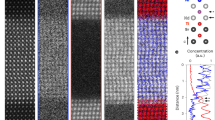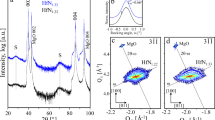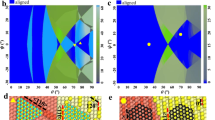Abstract
As part of an investigation into the effect of substrate structure on the nucleation and growth of electro-deposits, it was desired to produce in a metal single crystal of high purity various types of imperfection. ‘Striation’1 boundaries and cell boundaries (‘corrugation’2 boundaries) were thought to be suitable as the former should give low-angle boundaries (¼°–5°) with little impurity while the latter should illustrate the effect on nucleation of the impurity contained in cell boundaries.
This is a preview of subscription content, access via your institution
Access options
Subscribe to this journal
Receive 51 print issues and online access
$199.00 per year
only $3.90 per issue
Buy this article
- Purchase on SpringerLink
- Instant access to full article PDF
Prices may be subject to local taxes which are calculated during checkout
Similar content being viewed by others
References
Teghtsoonian, E., and Chalmers, B., Canad. J. Phys., 29, 370 (1951).
Rutter, J. W., and Chalmers, B., Canad. J. Phys., 31, 15 (1953).
Keck, P. H., and Golay, M. J. E., Phys. Rev., Ser. 2, 89, 1297 (1953).
Calverley, A., Davis, M., and Lever, R. F., J. Sci. Instrum., 34, 142 (1957).
Newkirk, J. B., Trans. Amer. Inst. Mech. Eng., 215, 483 (1959).
Rosenberg, A., and Tiller, W. A., Acta Met., 5, 565 (1957).
Teghtsoonian, E., and Chalmers, B., Canad. J. Phys., 30, 388 (1952).
Aust, K. T., and Chalmers, B., Canad. J. Phys., 36, 977 (1958).
Martius, U., Progress in Metal Physics, 5, 279 (Pergamon Press, Ltd., London, 1954).
Author information
Authors and Affiliations
Rights and permissions
About this article
Cite this article
BROWNSWORD, R., FARR, J. Substructures in Nickel grown from the Melt. Nature 195, 373–374 (1962). https://doi.org/10.1038/195373a0
Issue date:
DOI: https://doi.org/10.1038/195373a0



